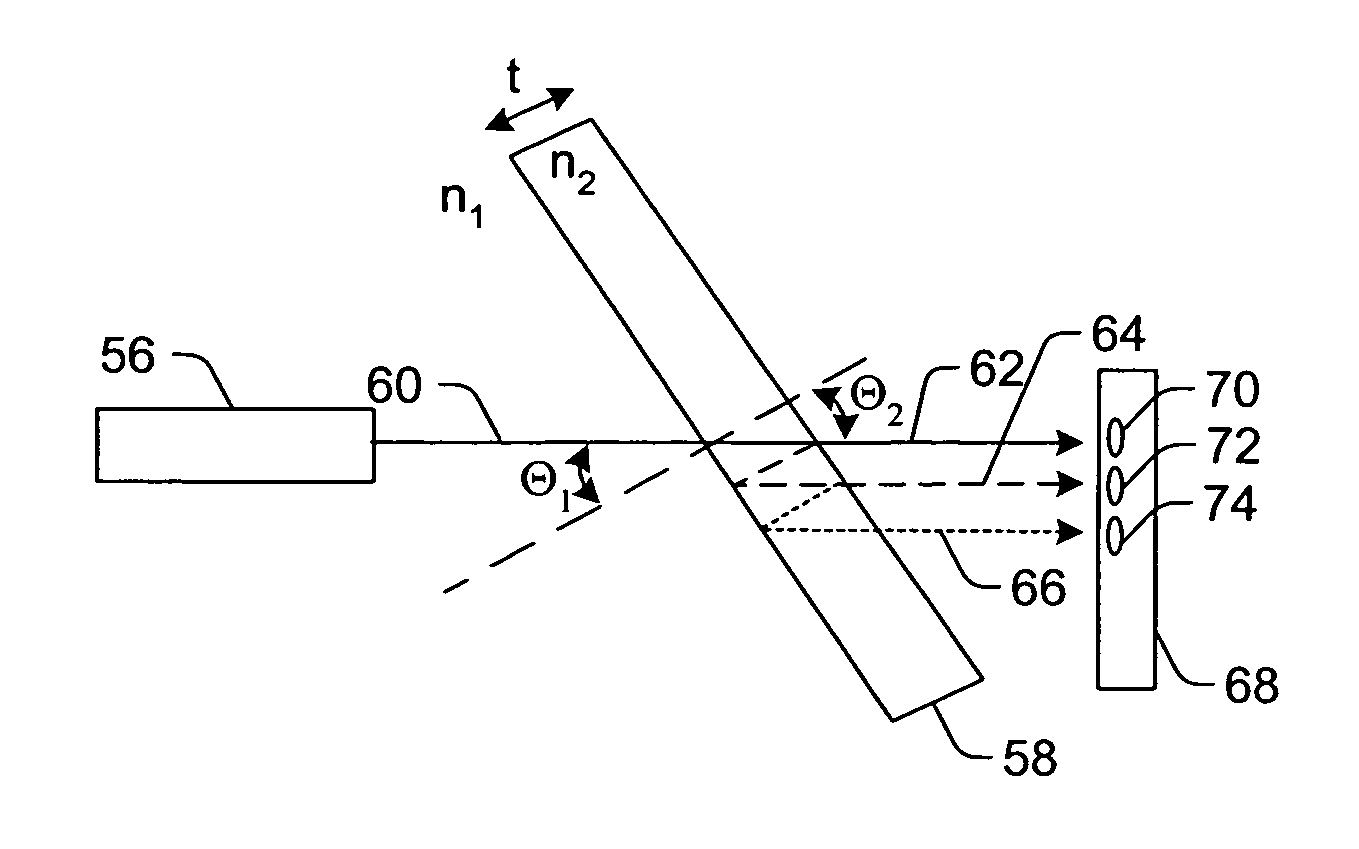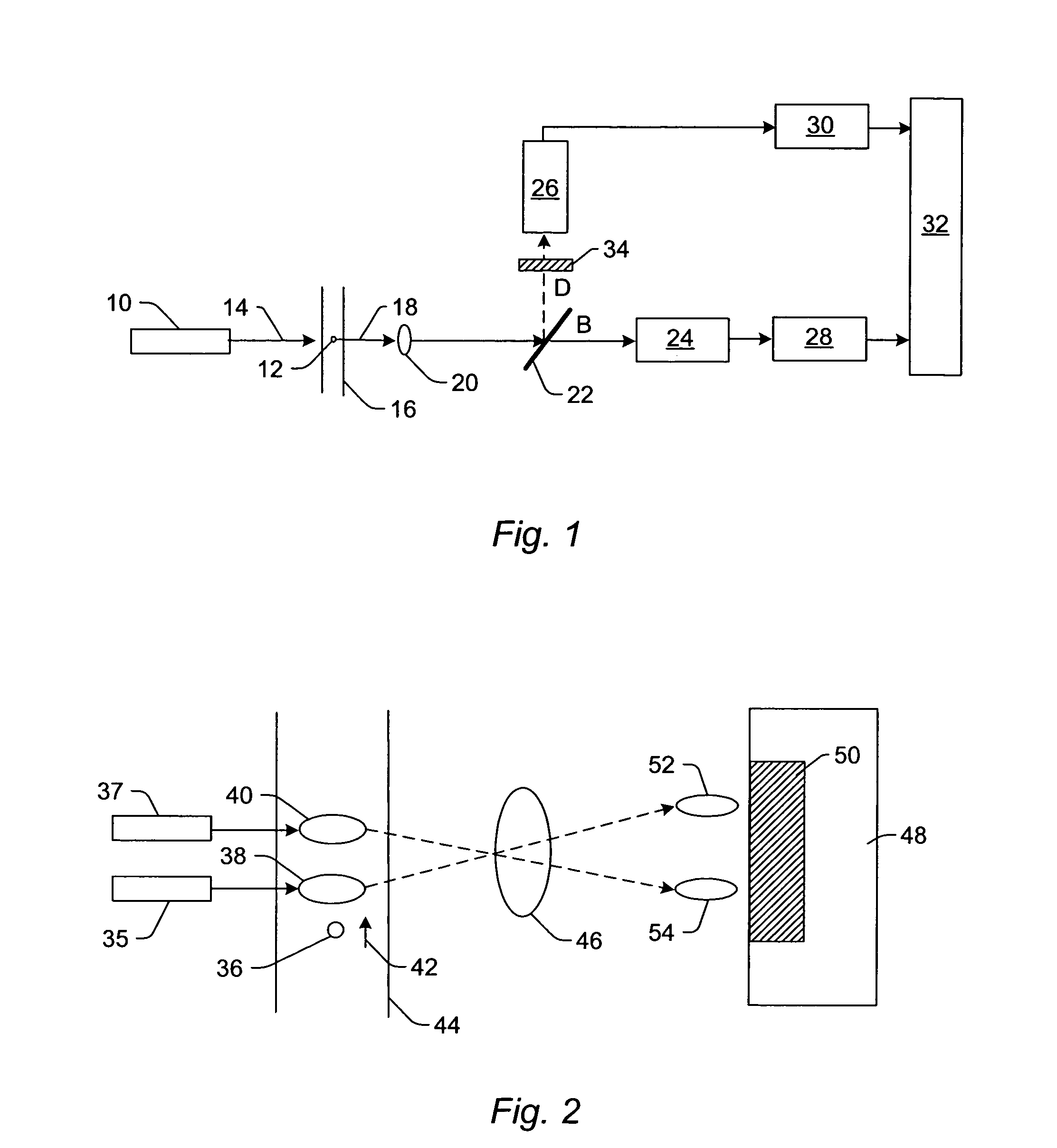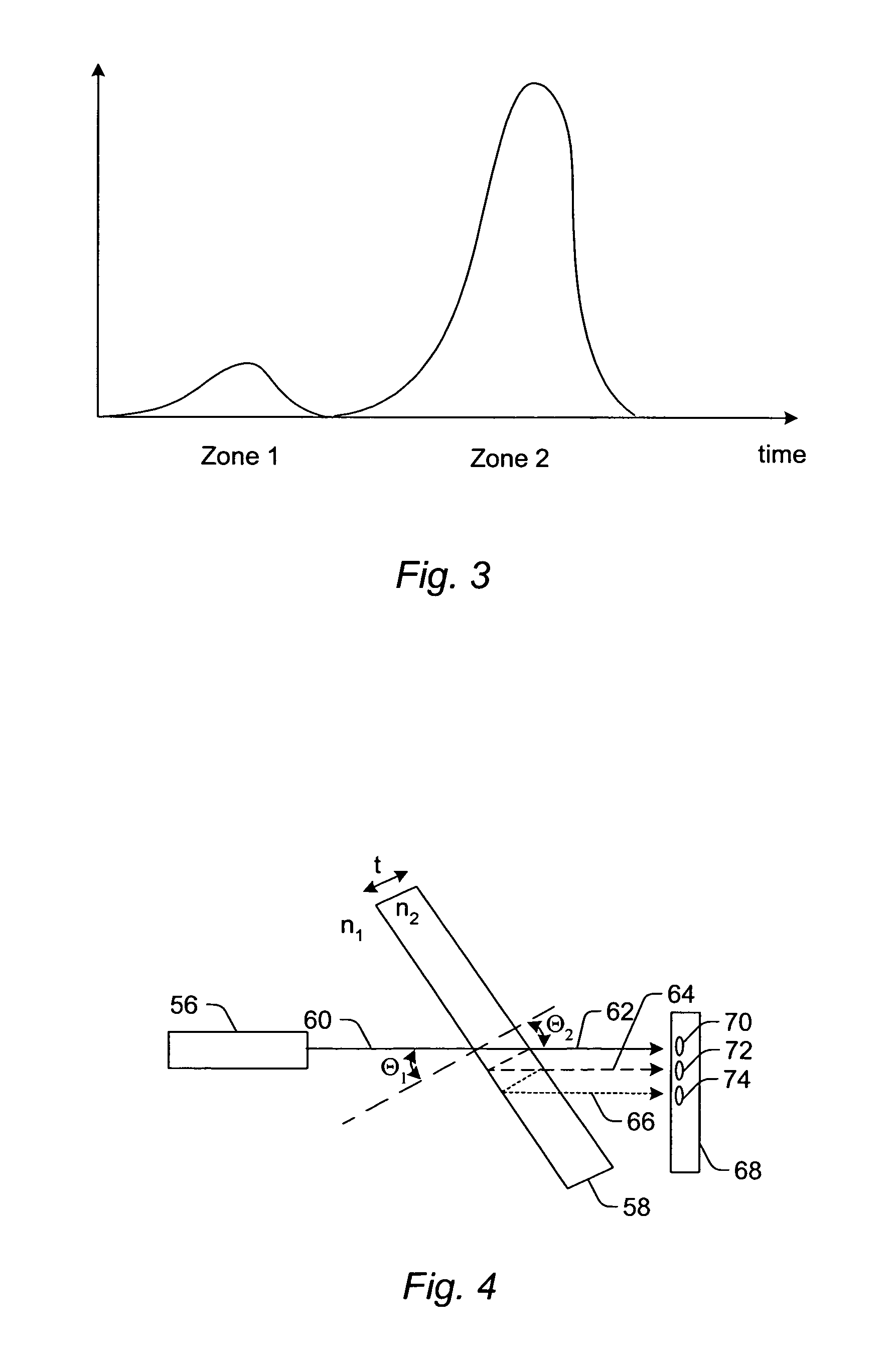Method and systems for dynamic range expansion
a dynamic range and expansion method technology, applied in the field of dynamic range expansion methods and systems, can solve the problems of reducing the useful dynamic range of flow cytometers, limiting the current availability of flow cytometers, and adding noise to the small signal level, so as to increase the dynamic range of the system
- Summary
- Abstract
- Description
- Claims
- Application Information
AI Technical Summary
Benefits of technology
Problems solved by technology
Method used
Image
Examples
Embodiment Construction
[0032]Although embodiments are described herein with respect to particles, it is to be understood that the systems and methods described herein may also be used with microspheres, polystyrene beads, microparticles, gold nanoparticles, quantum dots, nanodots, nanoparticles, nanoshells, beads, microbeads, latex particles, latex beads, fluorescent beads, fluorescent particles, colored particles, colored beads, tissue, cells, micro-organisms, organic matter, non-organic matter, or any other discrete substances known in the art. The particles may serve as vehicles for molecular reactions. Examples of appropriate particles are illustrated in U.S. Pat. No. 5,736,330 to Fulton, U.S. Pat. No. 5,981,180 to Chandler et al., U.S. Pat. No. 6,057,107 to Fulton, U.S. Pat. No. 6,268,222 to Chandler et al., U.S. Pat. No. 6,449,562 to Chandler et al., U.S. Pat. No. 6,514,295 to Chandler et al., U.S. Pat. No. 6,524,793 to Chandler et al., and U.S. Pat. No. 6,528,165 to Chandler, which are incorporated...
PUM
| Property | Measurement | Unit |
|---|---|---|
| fluorescent | aaaaa | aaaaa |
| angle | aaaaa | aaaaa |
| fluorescence | aaaaa | aaaaa |
Abstract
Description
Claims
Application Information
 Login to View More
Login to View More - R&D
- Intellectual Property
- Life Sciences
- Materials
- Tech Scout
- Unparalleled Data Quality
- Higher Quality Content
- 60% Fewer Hallucinations
Browse by: Latest US Patents, China's latest patents, Technical Efficacy Thesaurus, Application Domain, Technology Topic, Popular Technical Reports.
© 2025 PatSnap. All rights reserved.Legal|Privacy policy|Modern Slavery Act Transparency Statement|Sitemap|About US| Contact US: help@patsnap.com



